Since ancient times, when spring comes, it is also the “Tet painting season”, the streets and villages are filled with the bright colors of peach blossoms, it is the time when people and families go to the market to buy Tet paintings to decorate their houses, and at the same time express their wishes for a prosperous and peaceful new year. Because Tet paintings are both an elegant hobby and contribute significantly to preserving national culture.
There is a folk saying “First is words, second is paintings, third is ceramics, fourth is wood”, referring to the top hobbies of Vietnamese people during the Lunar New Year that have existed for generations. The hobby of playing with paintings during the coming of Tet, with its vibrant colors and unique lines, not only brings wishes for a new year of peace and prosperity, but is also a beautiful traditional custom, a part of the pure and kind Vietnamese soul.
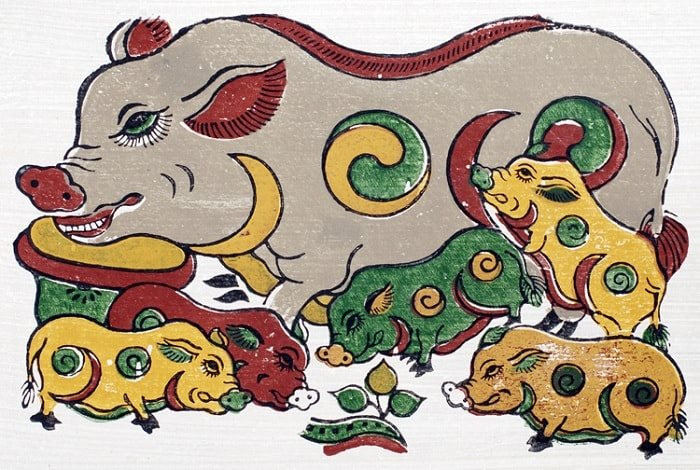
There are many genres of folk Tet paintings: religious paintings, congratulatory paintings, paintings praying for happiness - prosperity - longevity, house protection paintings, historical paintings, satirical paintings, landscape paintings... Tet paintings always carry the content of wishing for the best and hoping for a new year full of happiness and fulfillment. Each folk painting has its own meaning in life, expressing many aspects of human mood.
According to historical sources, during the Ly Dynasty (1010 - 1225), due to the need to purchase and collect folk paintings for holidays, Tet, and worship, a number of families specializing in woodblock carving and printing were formed, and even an entire village specializing in woodblock carving and printing.


During the Tran Dynasty (1225 - 1400), painting flourished, with many reliefs and engravings dating back to the Tran Dynasty or bearing the Tran artistic style. These reliefs and engravings on ceramic, wood and stone materials still exist today. Some of these were printed on paper with lines that seemed to be drawn with a pen. This was one of the forms of development of printing in Vietnamese history.
During the early Le Dynasty (1428 - 1527), in the 15th century, the Vietnamese adopted and improved the Chinese woodblock printing technique. From here, the flow of Vietnamese folk paintings began to differentiate and develop further.
During the development of wood carving, the production of folk paintings has expanded in many localities. Some localities have become famous centers for the production of folk wood carvings such as: Dong Ho (Bac Ninh), Hang Trong (Thang Long - Hanoi), Kim Hoang (Ha Tay, now Hanoi), Nam Hoanh (Nghe An), Sinh (Hue)...
During the Mac Dynasty (16th century), folk paintings developed strongly and were widely used by the aristocracy in Thang Long citadel during Tet, as evidenced by the poem below:
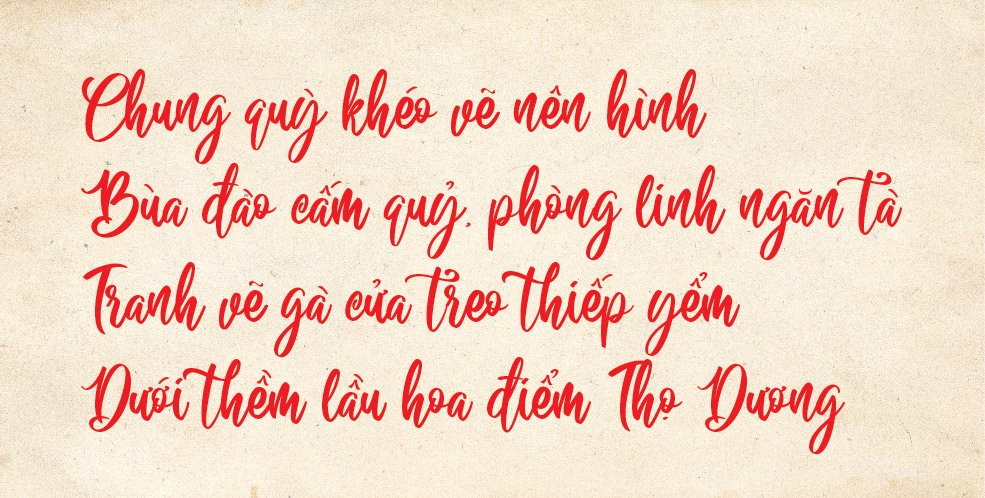
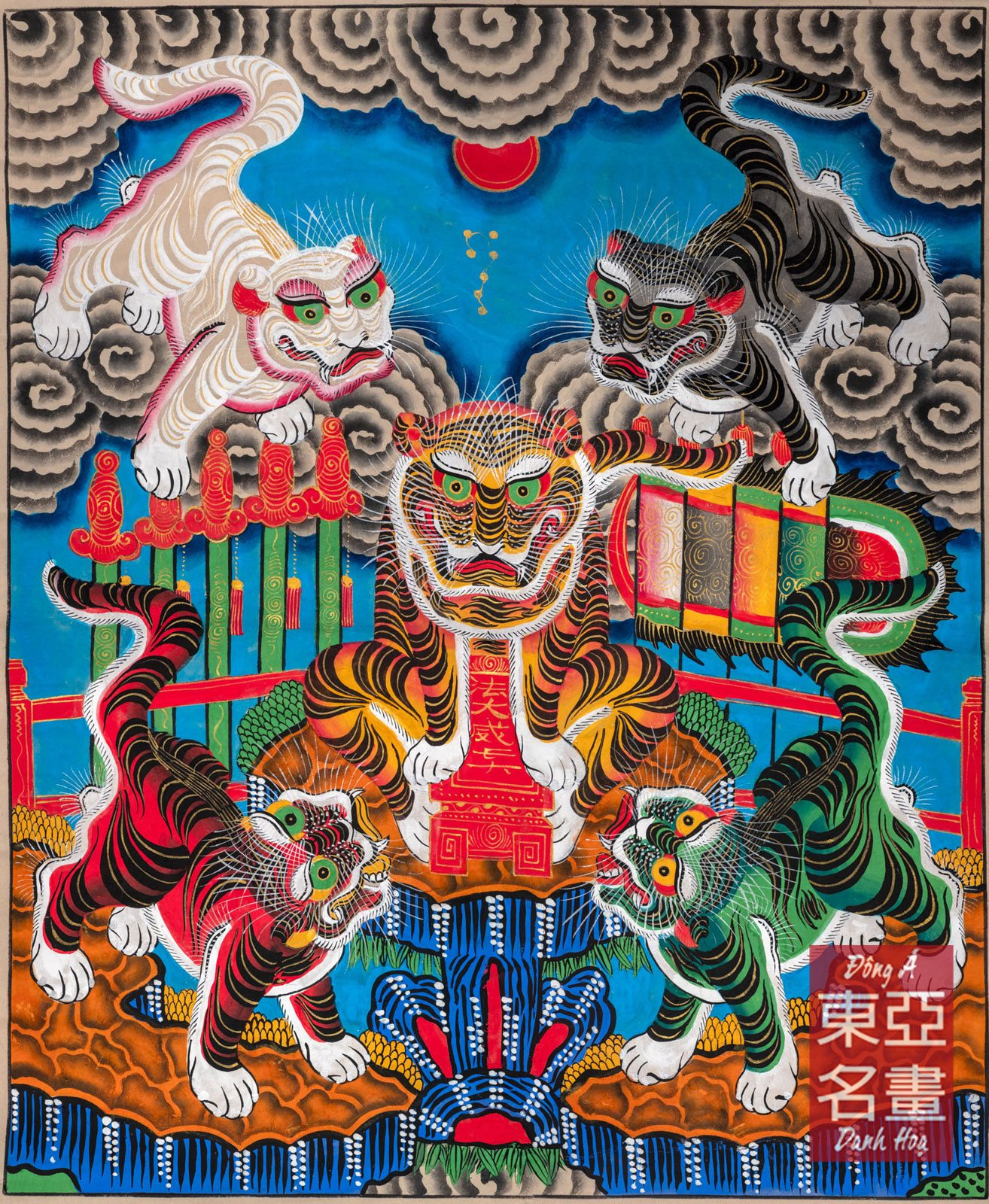
In the 18th and 19th centuries, Vietnamese folk paintings remained stable and highly developed. There were many genres of folk paintings, of which the most notable were Dong Ho paintings, Hang Trong paintings, Kim Hoang paintings and Sinh village paintings... mainly serving the shopping needs of the people to decorate for Tet.
Decorative paintings for Tet have a special meaning, both to "Send off the old, welcome the new" and to wish for a new year full of abundance and prosperity.
Tet paintings are also a place to preserve the profound spiritual values of Vietnamese people. Therefore, it is an indispensable part of the traditional Tet holiday space.
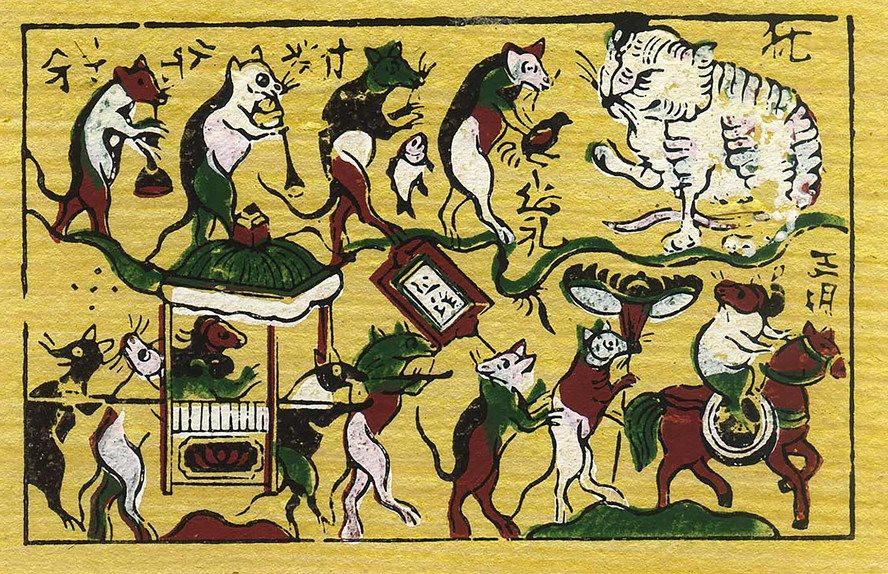
Along with the ups and downs of history, there are painting genres that thrive, but there are also painting genres that fade away over time, now only remaining in memory. Folk paintings are no longer at their peak, but the hobby of collecting paintings and the people who love the simple, rustic beauty of folk paintings still exist.
Especially when material life is increasingly prosperous, the concept of "eating Tet" has gradually changed to "playing Tet", so the way of playing Tet paintings is also richer and more diverse.
Article: Tran Manh Thuong
Photo: Document
Design: Khanh Linh
Source link



![[Photo] Prime Minister Pham Minh Chinh receives Ambassador of the French Republic to Vietnam Olivier Brochet](https://vphoto.vietnam.vn/thumb/1200x675/vietnam/resource/IMAGE/2025/5/13/f5441496fa4a456abf47c8c747d2fe92)
![[Photo] Many people in Hanoi welcome Buddha's relics to Quan Su Pagoda](https://vphoto.vietnam.vn/thumb/1200x675/vietnam/resource/IMAGE/2025/5/13/3e93a7303e1d4d98b6a65e64be57e870)

![[Photo] President Luong Cuong awarded the title "Heroic City" to Hai Phong city](https://vphoto.vietnam.vn/thumb/1200x675/vietnam/resource/IMAGE/2025/5/13/d1921aa358994c0f97435a490b3d5065)
![[Photo] President Luong Cuong attends the inauguration of the international container port in Hai Phong](https://vphoto.vietnam.vn/thumb/1200x675/vietnam/resource/IMAGE/2025/5/13/9544c01a03e241fdadb6f9708e1c0b65)
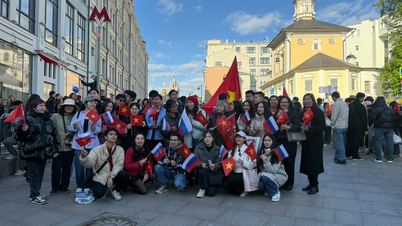





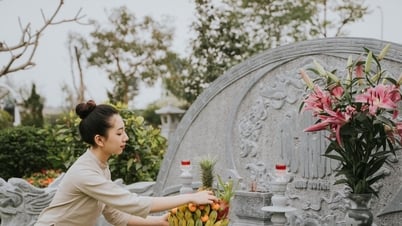

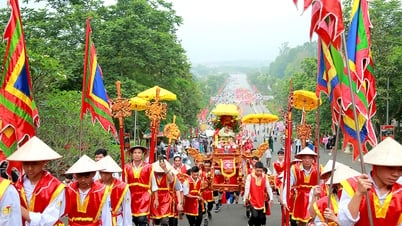



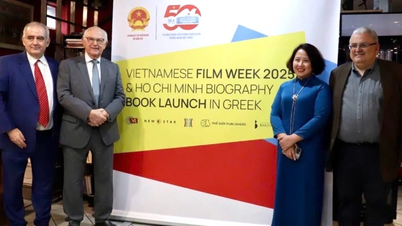
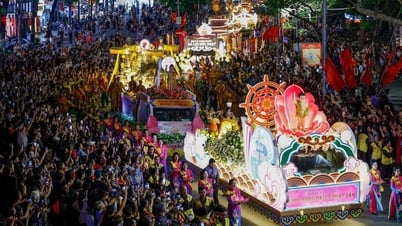
































































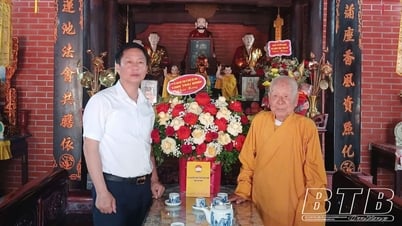















Comment (0)